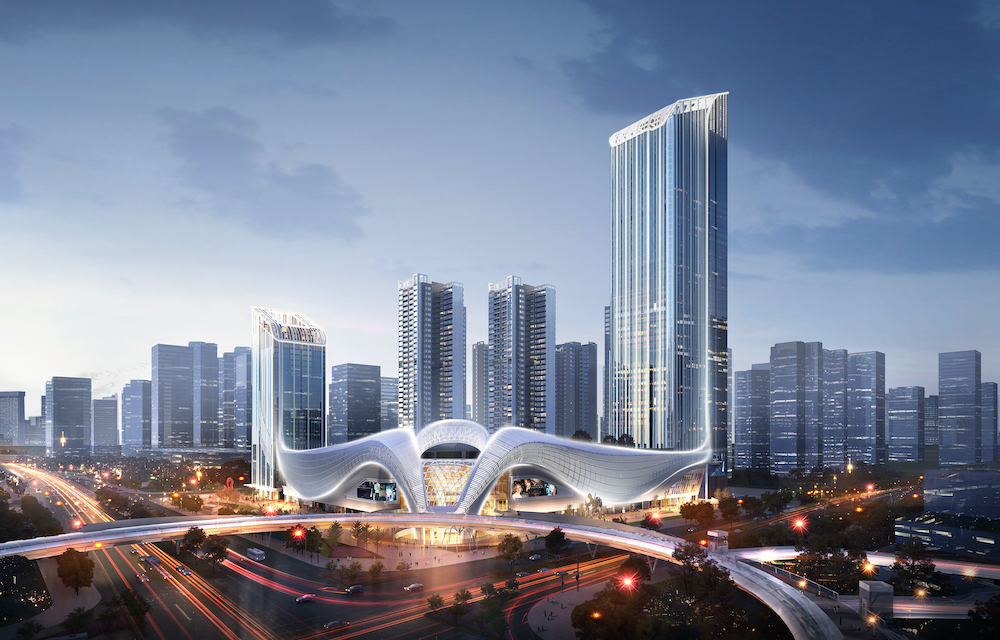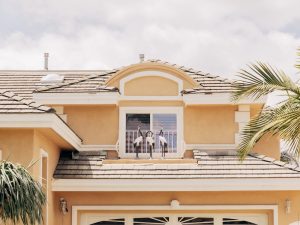The search for carbon neutrality in high-density cities

The stark messages from Glasgow’s COP 26 are still echoing around the world: our planet’s climate is trending in the wrong direction and collectively we need to do more to decarbonise our lifestyles, our cities and our atmosphere.
The goals of COP 26 are to secure global net zero by 2050 and keep 1.5 degrees within reach; adapt to protect communities and natural habitats; mobilise finance; and work together to deliver these connected strands. In Hong Kong, these goals help clarify what we have been working towards for the past few years – decarbonising the high-rise, high-density (HRHD) urban environment and working towards net zero, while also making cities more climate resilient and nature positive.
Climate scientists from the Intergovernmental Panel on Climate Change (IPCC) have modelled five possible global carbon emissions scenarios. Only the most optimistic scenario meets the Paris Agreement’s goal of keeping global warming to around 1.5 degrees Celsius above pre-industrial temperatures. The IPCC cannot predict which scenario is most likely to occur, but what is certain is that our choices today will affect our future.

Reducing carbon is a difficult – but not impossible – task for HRHD cities like Hong Kong. As with other HRHD cities, its building sector is extremely fossil fuel-dependent, responsible for 60% of all our carbon emissions – significantly higher than the global average of 40%. Our tropical heat is also a factor, with air conditioning responsible for 24% of commercial energy use.
Building professionals like myself have an undeniable responsibility to reduce carbon emissions through sustainable design, the use of the right materials, construction, operation, and decommissioning of buildings.
At my architectural firm, we create sustainable, human-centric, climate-ready designs. Over the past few years a substantial number of our projects have been located in the Greater Bay Area (GBA) – a megalopolis stretching between Guangzhou, Hong Kong and Macau. At around 56,000 km2 and with a population of 86 million, the GBA is one of China’s fastest-growing regions. It has also set a number of ambitious sustainable urban development targets.

Other sizeable urban areas around Asia are at various stages of a similar sustainable architecture journey – Tokyo, Singapore, and Bangkok for example. Faced with rapid population growth, a changing climate, ageing urban infrastructure, and consumed by social and economic uncertainties, what choice do any of these cities have?
True change can only come if our cities are designed to facilitate less energy-intensive lifestyles. The biggest barrier to such change is convenience: people have become used to living a convenient life. Cars are more convenient than public transportation, the corner shop is more convenient than the wholesale market, air conditioning is more convenient than natural ventilation, and so on.
But what if we could maintain this quality of life for citizens while also encouraging cultural change towards more sustainable behaviours? Several of my firm’s recent designs have been for transit-oriented developments (TODs). These large, comprehensive projects emphasise the concept of the “one-hour living circle”: everywhere people need to go – offices, homes, schools, shopping centres, recreation facilities – is no more than one hour away. This promotes convenience, reduces road traffic and carbon emissions, and encourages a low-carbon lifestyle – creating a cleaner, greener environment for residents.

TODs also prioritise “the last mile”, bringing people together by encouraging walkable pedestrian-oriented communities. Of course, care must be taken in tropical HRHD cities like Hong Kong, where weather-friendly designs with a lot of shade and well-ventilated walkways are essential, but my firm has already proven this possible through successful designs for projects like Unipark in Zhuhai, a waterfront TOD considered to be an “urban regenerator of a healthy lifestyle”; and Shunde Future City, a comprehensive TOD city design combining high-end businesses, smart homes, future-forward co-working spaces and shared residences.
Hong Kong is alight with new carbon reduction initiatives. My firm has joined the Business Environmental Council’s Power Up Coalition, pledging to ban the use of diesel generators to reduce construction emissions at all our project sites. There is also the Low Carbon Charter, which mobilises companies along the property and construction value chain to collectively contribute towards long-term decarbonisation through tangible carbon reduction targets.
We also use building information modelling and modular integrated construction – methods which create efficiencies at all stages of a project to reduce waste, ensure the most effective use of resources, simplify logistics and – naturally! – reduce costs. Cost in particular is an important factor in gaining buy-in for low-carbon measures across the industry.

But by far my favourite way to decarbonise HRHD building designs is through nature-based solutions. It may seem unorthodox, but there are so many ways to harness nature in a city. Increasing on-site greenery coverage and natural ventilation are two of the most obvious, but we can also use the built form itself to create self shading, harness daylight while intercepting solar heat, and create building permeability that responds to the urban microclimate – at all building levels, not just near the ground.
Why not integrate “doorstep greening” on every floor and in the communal spaces of skyrises? Or, as in the case of Treehouse, our winning design for the Hong Kong Green Building Council’s Advancing Net Zero Ideas Competition, design wind funnels and solar chimneys that harness wind and sunlight from upper stories to bring light and cool air to lower floors? Or even an algae wall that harnesses energy and provides biomass for the tri-generation of power, heating and cooling?
There is so much being done, and so much more to be done. It is an exciting time in the sustainable architecture field and, now that we have reached critical mass, I feel that the next two decades will bring carbon neutrality within reach. We need to keep our spirits up and maintain momentum.




